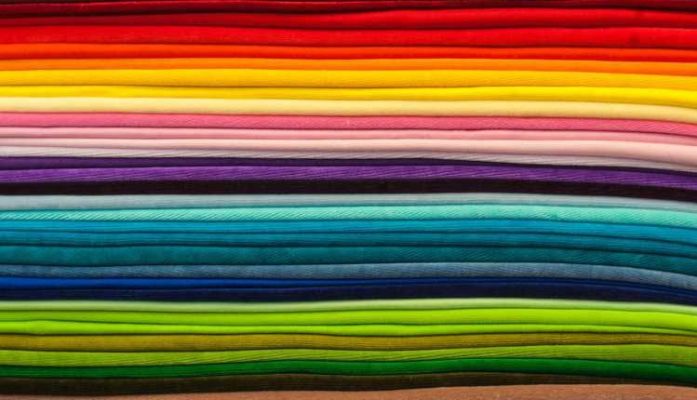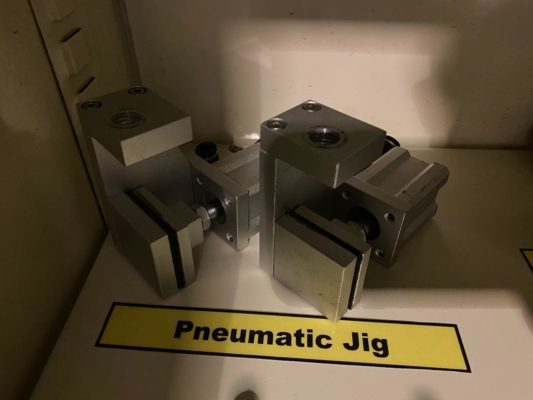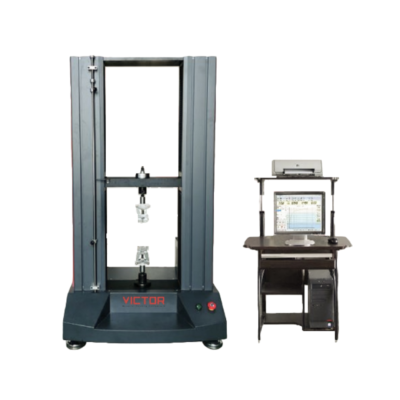ASTM is an international standards organization that is located in the United States of America. The purpose it was introduced to the industry is to publish technical standard agreements for various materials, products, systems, and others. Among the ASTM standards that is often use in the industry is ASTM D5035.
ASTM D5035 Breaking Strength and Elongation of Textile Fabrics (Strip Method)
Description
ASTM D5035 is an international test standard design for determining the breaking force and elongation of most textile fabrics. Manufacturing industries such as fabrics and others often use this standard. This standard is not recommended for knitted fabrics or for other textile fabrics which have high stretch (more than 11 %)
The reading values in this standard can be shown in both inch-pound units and SI units. Inch-pound units are customary units used in the United States while SI units is the system of metric units known as the International System of Units.
Usually in Malaysia, we often use SI units compared to Inch-pound units. Nowadays, ASTM standards recommended by both corporate and government bodies. In Malaysia, most industries use the ASTM D5035 standard in their companies. The Malaysian government has also adopted this standard.
Basically, ASTM D5035 measures the breaking force and elongation of textile fabrics. ASTM D5035 is a common testing standard for those needing to test fabrics made from Acetate, Acrylic, Cotton, Flax, Nylon, Olefin, Polyester, Rayon, Silk, and Wool. These fabrics may be woven and non-woven.
This test can be perform using Universal Testing Machine (UTM). The following properties are usually measure through ASTM D5035:
- Ultimate Tensile Strength or Maximum Load
- Elongation at Break
- Breaking Force
ASTM D5035 : https://www.astm.org/standards/d5035
Specimens
1. Textile fabrics

Test fabrics made from Acetate, Acrylic, Cotton, Flax, Nylon, Olefin, Polyester, Rayon, Silk, or Wool. A test specimen is clamped in a testing machine and a force is applied to the specimen until it breaks.
Grips
1. Pneumatic Grip

Pneumatic grips are particularly useful when a variety of materials. The gripping force is generate by pneumatic cylinders acting directly on the jaws or via a lever system. Pneumatic side action grips with rubber-coated jaw face are well-suit for clamping the strip specimens. Most prefer pneumatic grips compare to manual grips because pneumatic grips are easy to use, productive, and have better repeatability.
Type of UTM machine
For ASTM D5035, we recommend using UTM machines with a capacity of 5kN-20kN, it depends on the strength of the specimen. We also recommend using the dual-column table-top types machine.
1. VEW 2308
The machine is design by mechanical-electrical integration, the composition of the force-measuring Sensor, transmitter, microprocessor, mechanism of load drive, computer, and color inkjet printer.
The high-precision electronic motor can be set to five-speed, and the components are connected by plug-way, Floor-standing models, it is taken account of modern industrial design and ergonomics in modeling and Coating.
It can be tested with all the materials in a stretch, compression, bending, shear, embedded relay, and Peeling. tearing, crack, etc, such as rubber, plastics, leather, metal, nylon wire, fabric, paper, aerospace, packaging, construction, petrochemical, electrical, vehicle, etc.
The implementation of standards and standard configuration:
- GB/T4689.20-1996 Measuring fastness of leather’s adhesion
- QB/T2710-2005 Measuring leather’s expansion and the rate of elongation
- QB/T2711-2005 Measuring tear force of leather
- QB/T2712-2005 Measuring leather’s strength and stretch of spherical crack test
Test Procedure
- Prepare the specimens as described in the method.
- Measure the specimen dimensions. ASTM D5035 has a few variations based on sample size, a width of 1 in. is common.
- Place the sample into the pneumatic grips.
- Clamp the specimen at the top of the grip first then carefully clamp the sample into the bottom grip.
- Zero all the testing machines before starting the test.
- A slight preload may be applied to align the grips and remove slack.
- Begin the test by Clicking the start button on the software
- End the test after the sample break (rupture).
- Record and report test data that has been performed.

